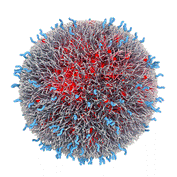Center, Biotechnology

Nebraska Center for Biotechnology: Faculty and Staff Publications
Document Type
Article
Date of this Version
10-27-2021
Citation
Vu, D.C.; Alvarez, S. Phenolic, Carotenoid and Saccharide Compositions of Vietnamese Camellia sinensis Teas and Herbal Teas. Molecules 2021, 26, 6496. https:// doi.org/10.3390/molecules26216496
Abstract
Tea (Camellia sinensis) and herbal tea have been recognized as rich sources of bioactive constituents with the ability to exert antioxidant actions. The aims of this study were to analyze phenolic, carotenoid and saccharide contents in a set of Vietnamese tea and herbal tea and compare the results with those of green and black teas marketed in the U.S. In total, 27 phenolics, six carotenoids and chlorophylls, and three saccharides were quantitatively identified. Catechins, quercetin glycosides and chlorogenic acid were the predominating phenolics in the teas, with the concentrations following the order: jasmine/green teas > oolong tea > black tea. Lutein was the dominant carotenoid in the teas and its concentrations were generally found to be higher in the jasmine and green teas than in the oolong and black teas. The study showed that the green teas originating in Vietnam had much higher levels of phenolics and carotenoids than their counterparts stemming from another country. The application of partial least squares discriminant analysis (PLS-DA) as a chemometric tool was able to differentiate phenolic profiles between methanolic extracts and tea infusions. Through principal component analysis (PCA), the similarities and dissimilarities among the jasmine, green, oolong, black teas and herbal teas were depicted.


Comments
© 2021 by the authors. Licensee MDPI, Basel, Switzerland. This article is an open access article distributed under the terms and conditions of the Creative Commons Attribution (CC BY) license